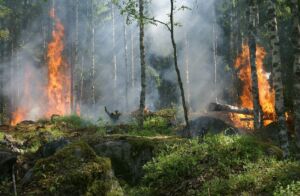
By Kellie Hale
The world is continuing to see an increase in high temperatures, seasonal weather is shifting, with an increasing impact on weather events (e.g., snowstorms, floods, hurricanes, tornados, drought, etc.). The longer we put aside our need for climate change adaptation, the more difficult and expensive it will be in combating this major issue. What are adaptations? They refer to adjustments within our ecological, social, or economic systems impacted by climate change. These systems processes, practices, and structures will continue to see a growth in damages associated with climate change.
On January 27, 2021, President Joe Biden took Executive actions to tackle the climate crisis, both home and abroad. Biden’s Executive Order’s goal is to begin the process of “creating good-paying union jobs and equitable clean energy future.” He also plans to re-establish the President’s Council of Advisors on Science and Technology. Biden is continuing to keep his promise of implementing aggressive action to tackle climate change. On his first day in office, Biden had the United States rejoin the Paris Agreement and did immediate steps on reviewing specific environmental rollbacks that appear harmful when it came to protecting our air, water, and communities. While our local, state, and federal government can help lead the way in successful adaptations, there needs to be an active and sustained engagement from stakeholders and communities. Everyone can play a role in combating climate change threats. The adaptation process is a cycle.
- Assess impacts, vulnerabilities, and risks: This is when the awareness of the issues is raised.
- Adaptation plan: Providing the space for engagement with stakeholders, political leaders, and community members.
- Implement the measures for adaptation: Sharing information and guidance while strengthening institutions’ capacities and technological advances.
- Adaptations need to be monitored and evaluated: Continue to engage with stakeholders and facilitate financial and technical support.
Why is the climate continuing to change?
The primary factor in the acceleration of climate change in the past century is human activity. Our ability to prepare, recover, and adapt to the climate crisis is called “Climate Resilience.” In the world of Emergency Management, we see the word ‘resilience’ a lot. Resilience is an essential component in emergency preparedness and recovery. As the climate is a global and hyper-local issue, resilience needs to be viewed as the antidote to combat our climate threats.
What is resilience?
According to Merriam-Webster Dictionary, the term resilience means “the capability of a strained body to recover its size and shape after deformation caused
especially by compressive stress,” and “an ability to recover from or adjust easily to misfortune or change.” Being able to excel in resiliency takes time and effort, with a different set of initiatives to form a workable framework to meet the necessary implementation goals. Many institutions have begun to incorporate resilience planning in their business recovery operations from the public to the private sector.
To bounce back from climate change risks, the planning, coordination, and mitigation operations must incorporate climate resilience methods and fully understand the climate risks. Individuals and institutions may prioritize one risk of the other. For example, losing power could be crucial to one person, but to another not so much, mainly if the latter individual lives in a more temperate environment. Then that person’s primary concern is finding ways to live through a heatwave. That is why it is crucial to identify the climate risks that best suit an individual or institution’s needs. The ability to bounce back through climate resilience will be different for everyone, but it is possible.
When it comes to managing the risks of climate change, it requires the individual or institution to address the threat and the situation’s vulnerability. Some hazards are easy to identify more than others, along with how to manage said threats. Under the “flag of resilience,” the discussion of outcomes is usually centered on investing in initiatives based on resiliency. These initiatives tend to cause arguments about spending costs to adapt infrastructure rebuilding or reanalyzing systems to combat climate change.
There is a path forward to understanding the risks and impacts of climate change. More people are becoming more aware of climate change’s dangerous effects on the world and more willing to change and adapt to lower the setbacks and threats. Business leaders worldwide are beginning to raise awareness and demanding action from government leaders. The need to install climate change policies to combat economic anxiety, environmental hazards and support government-funded investments towards technology can begin the process to create a path towards a sustainable and resilient future for individuals and institutions worldwide.

